Psychrometers, Hygrometers, and Data Loggers, Oh My!
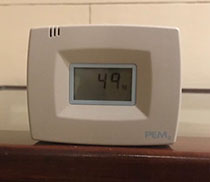 Few things are as exciting to me as a new tool, and the library’s recent acquisition of new PEM2 data loggers to track our environmental conditions leaves me positively giddy. It may not look that impressive, but in fact this little plastic box is the culmination of many years of innovation. (at left: Behold! The PEM2!)
Few things are as exciting to me as a new tool, and the library’s recent acquisition of new PEM2 data loggers to track our environmental conditions leaves me positively giddy. It may not look that impressive, but in fact this little plastic box is the culmination of many years of innovation. (at left: Behold! The PEM2!)
I know, the history of environmental monitoring might seem pretty dry, so let me introduce you to one of our books from special collections to help tell the story. I asked our special collections librarian, Barbara Bieck, to help me choose a book that was a.) old, and b.) pretty, and this 1618 history of the Netherlands fit the bill. Also, I could easily reach it on the shelf. Bonus! (at right: D'Emanuel de Meteren, L'histoire des Pays-bas…Belgium, 1618)
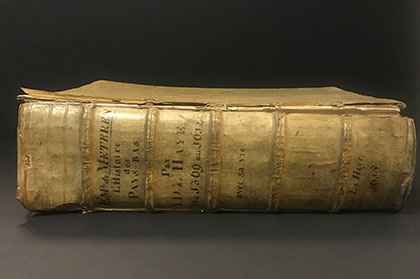
A lot has changed in the 400 years since this book was printed, and the fact that it has survived all this time is a testament to the value we place on books. It’s not a coincidence that this book has lasted this long. It was made of quality materials, and we can assume some effort was put into protecting it from the elements. Our ability to do that has markedly improved since the 17th century. Galileo Galilei designed a basic thermometer only 18 years before this book was published. The first mercury barometer was built 25 years later. While prototype hygrometers (tools for measuring humidity) were used in ancient China, a more accurate hair-tension hygrometer wasn’t introduced in the West until 1783. It would be another 288 years after the publication of our book before the first air conditioner was built.
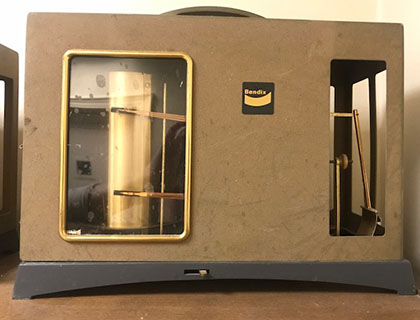
A flurry of new instruments were designed in the twentieth century, and lucky for us, we still have a few examples lingering around the library. This handsome Bendix Hygro-thermograph has been a workhorse for many institutions for decades. (shown to the left.) It relies on basic but reliable 18th century technology, and similar models to this one are still available. However, it is time consuming to use, and requires some skill to operate. Not unlike our Psychrometer. seen here at the right. This instrument can be difficult to calibrate, and I will admit, I did not make it much farther than step 3 while reviewing the directions. I have included a photograph of them, so, if you’re so inclined….have at it!
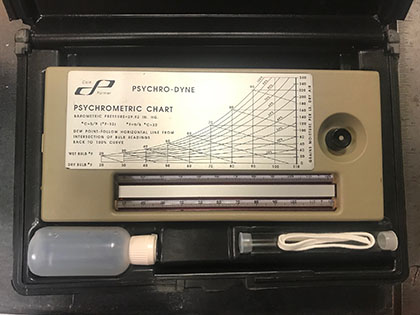

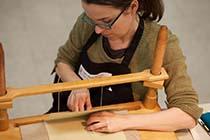

Disqus Comments